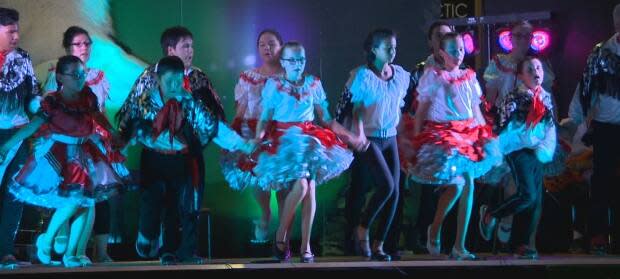U of S researcher studying benefits of traditional Métis dancing
A University of Saskatchewan researcher will be embarking on a five-year study that looks at the various benefits of performing traditional Métis dances.
Heather Foulds, an assistant professor of kinesiology, said the dancing could help narrow health inequity between Métis and non-Indigenous people.
"Assessing the value of cultural-based programs to improving health is timely, given growing Métis population and the formidable health disparities," Foulds said in a news release.
Dances like the Red River Jig and Orange Blossom Special can be vigorous and up-tempo, the release said, with dancers reaching as many as 10,000 steps during a 30-minute class. Part of the study will assess step count, the demand on cardiovascular health and dancing's effectiveness in improving risk factors that lead to heart disease.
But Foulds' study will look beyond just benefits for people's physical health.
"Dancing also engages cognition, control of body movements, and feelings of social inclusion and engagement — fundamental factors that contribute to better mental health and well-being," she said in the release.
"Métis dancing is a culturally safe, Indigenous-led initiative that includes storytelling, spirituality and community awareness. It can buffer the effects of colonization that have eroded Métis identity as a distinct nation in Canada with a unique history, culture and language."
Foulds will also assess if dancing helps individuals, families and communities change their view on health.
The project is receiving $1.07 million from the Canadian Institutes for Health Research. It builds on a study Foulds started last year on the intensity and training effectiveness of the Red River Jig, the release said.
Foulds plans to begin the project in May once she returns to work from maternity leave, assuming the COVID-19 pandemic has calmed down, it said.
How the study will work
Professional and recreational dancers from the Saskatoon area, who are over the age of 18, will all undergo comprehensive assessments before and after the study that will evaluate them physically and psychologically. It will also look at their social supports and how connected they feel to their culture.
Recreational dancers will join dance classes where they perform traditional Métis square dances, from the slow Snake in the Grass, to the medium-paced Lady Round Lady, to the faster Old Wagon Wheel.

Those will be followed up by performing social dances such as Schottische and ending with the Orange Blossom Special, the release said.
Base fitness levels in recreational dancers will be assessed through testing before they start taking dance classes. Those same tests will be done when classes end three months later to measure any improvements in participants' physical health.
Over the course of the five years, there will be multiple rounds of the three-month courses featuring different amateur dancers, the release said.
Meanwhile, 12 professional dancers were chosen for the study. Exercise intensity will be tested through their step counts and heart rates when performing at community "kitchen dances" and professional performances, it said.
Interviews with all dancers, using standardized questionnaires, will be used to assess the participants' mental health benefits.
In addition to the study of health benefits, 16 prominent community members will be interviewed, and literature and archives will be reviewed to see if there is a resurgence in Métis dancing, the release said.
That research will tell the story and symbolism of each dance and the significance of dancing health-wise, it added.
"This intervention tailored to Métis culture and ways of knowing will honour the emergence of Métis worldview, language and culture, and support a practice of reconciliation in research," said Foulds in the release.

